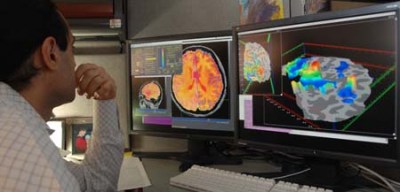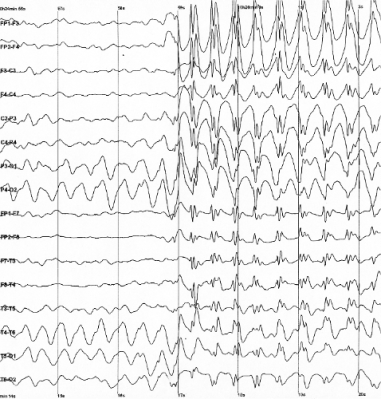

The Real Science (Not Armchair Science) Of Consciousness
source link: https://hackaday.com/2021/12/15/the-real-science-not-armchair-science-of-consciousness/
Go to the source link to view the article. You can view the picture content, updated content and better typesetting reading experience. If the link is broken, please click the button below to view the snapshot at that time.
Among brain researchers there’s a truism that says the reason people underestimate how much unconscious processing goes on in your brain is because you’re not conscious of it. And while there is a lot of unconscious processing, the truism also points out a duality: your brain does both processing that leads to consciousness and processing that does not. As you’ll see below, this duality has opened up a scientific approach to studying consciousness.
Are Subjective Results Scientific?
 Checking fMRI images.
Checking fMRI images.
In science we’re used to empirical test results, measurements made in a way that are verifiable, a reading from a calibrated meter where that reading can be made again and again by different people. But what if all you have to go on is what a person says they are experiencing, a subjective observation? That doesn’t sound very scientific.
That lack of non-subjective evidence is a big part of what stalled scientific research into consciousness for many years. But consciousness is unique. While we have measuring tools for observing brain activity, how do you know whether that activity is contributing to a conscious experience or is unconscious? The only way is to ask the person whose brain you’re measuring. Are they conscious of an image being presented to them? If not, then it’s being processed unconsciously. You have to ask them, and their response is, naturally, subjective.
Skepticism about subjective results along with a lack of tools, held back scientific research into consciousness for many years. It was taboo to even use the C-word until the 1980s when researchers decided that subjective results were okay. Since then, here’s been a great deal of scientific research into consciousness and this then is a sampling of that research. And as you’ll see, it’s even saved a life or two.
Measuring Tools
The number of methods and tools for examining the human brain has grown over the years. The first was to learn from neuropsychology patients who suffered brain damage, correlating which areas were physically damaged with the resulting effects. Then there are the type of experiments often associated with psychologists where subjects perform tasks and their behavior is monitored to test some hypothesis.
Another early method was the insertion of electrodes into the brain, usually while patients are undergoing surgery. The advantage of electrodes is they can be used to both monitor neuronal activity and to stimulate it.
 EEG example. Credit: Der Lange CC BY-SA 2.0
EEG example. Credit: Der Lange CC BY-SA 2.0
Electroencephalography (EEG) involves the placement of electrodes on the scalp to measure voltage fluctuations resulting from ionic current in the brain’s neurons. It’s an old method that has advanced greatly, sometimes with the placement of as many as 256 electrodes. Magnetoencephalography (MEG) is similar to EEG except that it measures magnetic fields using squibs placed on the scalp. EEG and MEG are both particularly useful for following the timing of events since they measure neuronal activity as it’s happening. You’ve probably heard of EEG in the context of observing brain waves.
Positron Emission Tomography (PET) and Magnetic Resonance Imaging (MRI) have also been widely used for a while. Functional MRI (fMRI), invented in 1990, gives a 3D image of brain activity by detecting small changes in the blood flow that follow the onset of that brain activity. But while fMRI gives a good full brain view of where activity happened it lags neural activity by around 1 or 2 seconds and so it doesn’t offer the precise timing you get with EEG or MEG.
Along with electrodes in the area of brain stimulation are Transcranial Magnetic Stimulation (TMS) and optogenetics. TMS uses electromagnetic induction to cause a current across neuron cell membranes which can cause them to fire. Optogenetics causes neurons to fire by stimulating them with light, usually from a laser.
Masking and Subliminal Priming
Back to consciousness. Imagine being able design an experiment where you can control what’s processed unconsciously and what’s processed consciously so that you can then use instruments to determine which neural pathways are used in the two cases. Masking is a tool that allows that level of control. An example of masking is to show an image for 33 milliseconds, but before and after showing it, show another image called a mask. You’ll be conscious of the mask image but not the middle one that was shown for only 33 milliseconds. That length of time is ideal, and the longer it is shown for, the greater the likelihood you’ll be conscious of it.
 Masking and priming experiment.
Masking and priming experiment.
One example of such an experiment shows a 71 ms mask, then a numerical digit or the word for a number for 43 ms, then another 71 ms mask and then a second digit, this time for 200 ms. You won’t have processed the first number consciously but you’ll be asked to indicate if the second digit was less than or greater than 5 by raising either your left or right hand respectively. If the value of the first digit was close to the value of the second digit then you’ll be able to move your hand sooner.
Why? Because even though you weren’t conscious of the first digit, unconscious pathways in your brain involving the motor cortex will have been activated due to the the first digit. And even though you don’t know it, the processing going on has been observed using EEG and fMRI. This experiment is also called priming or subliminal priming, where the first digit primes the activity for the second one.
Attentional Blink
Another technique for creating conscious and unconscious processing in an experiment is to take advantage of the fact that there’s a limit on the number of things that can be attended to at the same time, you saturate consciousness. One way to demonstrate this is to show a sequence of numbers and in the middle, show two letters. You are told to watch for the letters. The first letter is easily remembered. However, if the second letter comes too soon after the first then you will not be aware of it at all. This is called attentional blink. Along with some tweaking, it allows you to study what happens in the brain when the letter is consciously perceived versus when it’s not.
These priming, masking, and attentional blink techniques have been so finely tuned that all sorts of experiments can be planned ahead of time where researchers can produce unconscious and conscious activity at will and then observe the resulting brain activity.
Observing Conscious Activity
 EEG of conscious and unconscious brain activity.
EEG of conscious and unconscious brain activity.
An experiment that involved observing conscious activity involving attentional blinkand eventually contributed to the ability to detect consciousness in coma patients. The experiment used EEG so that events could be observed as they were happening. A sequence of images of letters and words were shown to the subjects. They were asked to detect words in the sequence but were also shown images that had letters which they were to report on. The letters acted as a distraction, making them miss the word. This was the attentional blink. The experimenters tuned the parameters so that they could control when the subjects would consciously see the word and when they would be unconscious of it, it would be unseen.
The diagram shows the EEG results comparing brain activity when the word was seen versus when it was unseen. The activity at around 96 ms and 180 ms was pretty much the same for both. This is unconscious activity where early processing of the images was going on. But then around 276 ms, there began a big difference in activity between when the word was seen versus when the word was unseen. This continued right up to around 576 ms. This difference is the conscious processing.
This timing and activity is found to be common for conscious activity involving vision. Practically identical processing happens for around the first 300 ms in experiments where subjects report being unconscious or conscious of what’s being tested. However, for the experiments where subjects report being conscious of what’s being tested, starting around 300 ms there’s an avalanche of activity.
In Stanislas Dehaene’s book, Consciousness and the Brain: Deciphering how the brain codes our thoughts, he describes four signatures of conscious thought, i.e., the activity that is observed during this avalanche:
- a sudden ignition of activity in the upper back area of the brain where sensory processing happens (the parietal region) and the front part of the brain’s frontal lobe (the prefrontal cortex) which is implicated in decision making, short-term memory, planning and other high level activity,
- a P3 wave observed using EEG that sweeps over the parietal region and the prefrontal cortex,
- a late and sudden burst of high-frequency oscillations, and
- a massive synchronization of electromagnetic signals across the entire cortex — the wrinkled outer layer of the brain.
These then are signatures of consciousness and examining what’s going on in the brain during this time may someday lead to understanding exactly how consciousness works. In the meantime, this research has lead to a consciousness detector.
Detecting Consciousness In Coma Patients
In his book, Dahaene describes how he and his colleagues made use of this research to detect consciousness or the lack thereof in coma patients. To make it cheap, they used EEG, available to many intensive care units. They tested for the P3 wave, the 2nd signature of consciousness.
They play four identical sounds followed by a fifth deviant one: beep, beep, beep, beep, boop. The deviant one triggers a P3 wave. Unfortunately the auditory cortex also produces an unconscious mismatch response, called MMN, which also results in a P3 wave. To make up for this, they play the repeating four beeps and the deviant boop for a while and then suddenly play five beeps without the deviant. Without the deviant, the unconscious mismatch response doesn’t activate but conscious processing notices that there was no deviant and the P3 wave still occurs. A patient who wasn’t conscious would not produce the P3 wave.
Their test identified different patients as unconscious or conscious and the ones that showed consciousness regained partial or full consciousness within days. Subsequent use of the test even saved a life. Doctors had a patient whom they were ready to give up on when this detection technique convinced them to wait a while longer. They did so and the patient eventually recovered fully.
So the next time someone tells you that we don’t know what consciousness is and that it’s some mystical, unknowable thing, tell them that there is actual scientific research into consciousness that has already produced beneficial results, even if the field is still in its infancy.
Recommend
About Joyk
Aggregate valuable and interesting links.
Joyk means Joy of geeK